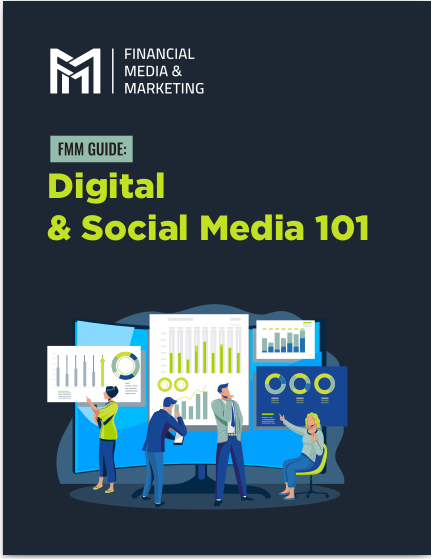Key Takeaways
- Personalization is key: Tailor your newsletters to the specific interests and needs of your clients to increase engagement and satisfaction.
- Consistency and quality matter: Establish a regular schedule for sending newsletters and ensure each edition is informative, visually appealing, and valuable to your clients.
How to Write Financial Advisor Newsletters that Clients Love
Creating newsletters that captivate your clients is an essential part of building and maintaining strong relationships. As a financial advisor, your newsletters are a direct line of communication with your clients, providing them with valuable insights and updates about their finances. This article will guide you through the steps of writing newsletters that your clients will look forward to receiving.
Understanding Your Audience
Identifying Client Needs and Interests
The foundation of any successful newsletter is a deep understanding of your audience. Start by identifying the needs and interests of your clients. Conduct surveys and gather feedback to find out what topics they are most interested in. Analyze client demographics and preferences to tailor your content accordingly.
Personalization Strategies
Personalization is more than just addressing your clients by their names; it’s about tailoring content to their specific situations and interests. Segment your client base into different groups based on factors like age, financial goals, and investment preferences. This allows you to send more relevant and personalized content, which can significantly increase engagement rates.
Crafting Compelling Content
Choosing Relevant Topics
Your newsletter topics should always be relevant and timely. Stay updated with industry trends and include content that addresses common client concerns and questions. This might include market updates, financial planning tips, or new investment opportunities. By providing valuable and relevant information, you position yourself as a trusted advisor who is always looking out for your clients’ best interests.
Writing Clear and Concise Articles
Financial topics can often be complex and daunting. It’s essential to simplify these concepts without diluting the information. Use clear and concise language, and avoid jargon that might confuse your clients. Maintain a friendly and professional tone to make your newsletters approachable and easy to read.
Designing an Appealing Layout
Importance of Visual Appeal
An appealing layout can make a significant difference in how your newsletter is received. Use professional templates to give your newsletter a polished look. Balance text with images and graphics to break up large blocks of text and make the content more digestible. Visual elements like charts and infographics can also help explain complex financial concepts more effectively.
Easy-to-Navigate Structure
Your newsletter should be easy to navigate. Use headings, subheadings, and bullet points to organize the content logically. This not only enhances readability but also helps clients quickly find the information they’re most interested in. Ensure that your newsletter is mobile-friendly, as many clients will likely read it on their smartphones.
Engaging Subject Lines and CTAs
Crafting Attention-Grabbing Subject Lines
The subject line is the first thing your clients see, so it needs to grab their attention. Make it compelling and relevant to the content of the newsletter. Use action-oriented language and create a sense of urgency or curiosity. A/B testing different subject lines can help you determine what resonates best with your audience.
Effective Call-to-Actions
Every newsletter should have a clear call-to-action (CTA) that encourages client interaction. Whether it’s scheduling a consultation, downloading a resource, or reading a full article, make sure your CTAs are prominent and easy to follow. Provide value in your CTAs to entice clients to take the desired action.
Frequency and Consistency
Establishing a Regular Schedule
Finding the right balance in your newsletter frequency is crucial. You want to stay in touch regularly without overwhelming your clients. Establish a consistent schedule, whether it’s weekly, bi-weekly, or monthly, and stick to it. Consistency helps build anticipation and trust.
Monitoring and Adjusting Frequency
Regularly analyze open rates and engagement metrics to gauge how your newsletters are being received. Be prepared to adjust the frequency based on client feedback and performance data. If clients are unsubscribing or not engaging, it might be a sign that you need to scale back or adjust your content strategy.
Measuring Success
Key Metrics to Track
To understand how well your newsletters are performing, track key metrics like open rates, click-through rates, and conversion rates. Additionally, consider client feedback and engagement levels to get a fuller picture of your newsletter’s impact.
Using Analytics for Continuous Improvement
Utilize tools and software to track and analyze your newsletter performance. Use these insights to make data-driven decisions and continuously improve your content. Experiment with different formats, topics, and CTAs to see what works best and iterate based on the results.
Recap of Key Strategies for Successful Financial Advisor Newsletters
Creating newsletters that your clients love involves understanding their needs, crafting compelling content, and maintaining a visually appealing and easy-to-navigate layout. Personalized content, attention-grabbing subject lines, and effective CTAs are crucial components of a successful newsletter. Establishing a consistent schedule and regularly measuring your success will help you continuously improve and provide value to your clients.










